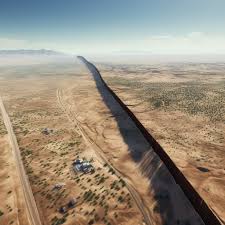At TEMS Tech Solutions (TTS), our Border Security Analytics service equips governments, defense agencies, and security organizations with cutting-edge tools to enhance border security, monitor illegal activities, and ensure the safety and integrity of national boundaries. By leveraging big data, AI, and predictive analytics, we deliver actionable insights that help improve decision-making, resource allocation, and operational effectiveness in border management.
Key features include:
-
Real-Time Threat Detection: Monitor border areas in real time using advanced data analytics, sensors, and surveillance systems to detect potential threats, unauthorized border crossings, or suspicious activities.
-
Predictive Threat Analysis: Use predictive models to forecast potential security threats, such as illegal migration, smuggling, or terrorist activity, enabling preemptive action and enhanced response planning.
-
Behavioral and Movement Analytics: Analyze the movement patterns and behaviors of individuals, vehicles, or groups near border areas to identify abnormal or suspicious activities that require attention.
-
Geospatial Intelligence: Leverage satellite imagery, drones, and geographic data to monitor remote and vulnerable areas, providing comprehensive surveillance and situational awareness.
-
Risk Assessment and Prioritization: Conduct risk assessments based on historical data, crime reports, and geopolitical trends to prioritize border security efforts and allocate resources efficiently.
-
Cross-Border Traffic Analytics: Analyze patterns in cross-border traffic, including commercial, personal, and cargo movements, to identify bottlenecks, optimize checkpoint operations, and detect potential security threats.
-
Illegal Trade and Smuggling Analytics: Track and analyze patterns in illegal trade activities, such as drug smuggling, arms trafficking, or human trafficking, allowing for targeted enforcement actions.
-
AI-Driven Surveillance: Integrate AI-powered video and sensor surveillance to automate the detection of unusual activities, reducing the need for manual monitoring while improving accuracy and speed in threat identification.
-
Immigration and Visa Compliance Analytics: Monitor immigration trends, visa usage, and compliance with entry/exit regulations to prevent illegal immigration and overstays, ensuring better management of national borders.
-
Incident Response Optimization: Use data analytics to optimize incident response times and strategies, ensuring that border security teams can react quickly and effectively to potential threats.
-
Border Patrol Resource Allocation: Leverage data to analyze patrol routes, personnel deployment, and resource usage, enabling more efficient coverage of vulnerable border areas.
-
Customs and Cargo Screening Analytics: Improve the effectiveness of customs screening by analyzing cargo manifests, shipping routes, and trade data to flag high-risk shipments for closer inspection.
-
Collaborative Intelligence Sharing: Facilitate secure sharing of border security intelligence and data between national security agencies, customs departments, and international partners to enhance cooperation and threat mitigation.
-
Data Integration from Multiple Sources: Combine data from various sensors, surveillance systems, biometric databases, and intelligence reports to provide a unified view of border security operations.
-
Facial Recognition and Biometric Analytics: Integrate facial recognition and biometric analysis into border checkpoints to identify wanted individuals, verify identities, and prevent unauthorized entry.
-
Drone and UAV Monitoring: Utilize unmanned aerial vehicles (UAVs) and drones for aerial surveillance of border regions, providing real-time monitoring and capturing critical data from inaccessible areas.
-
Cross-Border Communication Monitoring: Analyze cross-border communication patterns, including mobile and internet data, to detect potential coordination between criminal networks operating across borders.
-
Smuggling Route Mapping: Map and analyze known smuggling routes for drugs, weapons, or human trafficking to predict future activity and implement targeted interventions.
-
Public Safety and Emergency Response: Use border security data to inform broader public safety initiatives, including emergency response planning and coordination during crises at border areas.
-
Environmental and Terrain Analysis: Analyze terrain, weather, and environmental factors to optimize border patrol routes, improve surveillance coverage, and anticipate challenges in border security operations.
-
Cybersecurity for Border Systems: Monitor and protect border security networks, databases, and communication systems from cyberattacks, ensuring the integrity and confidentiality of sensitive data.
-
Automated Border Control Systems: Use data-driven insights to enhance automated border control systems (e-gates, biometric entry points), improving efficiency while maintaining high security standards.
-
Anomaly Detection in Border Crossings: Identify anomalies in border crossing data, such as unusual volumes of people or goods, helping to detect and prevent potential security risks.






Reviews
There are no reviews yet.